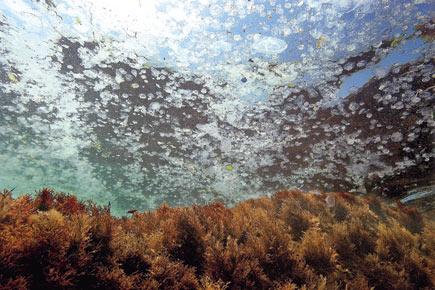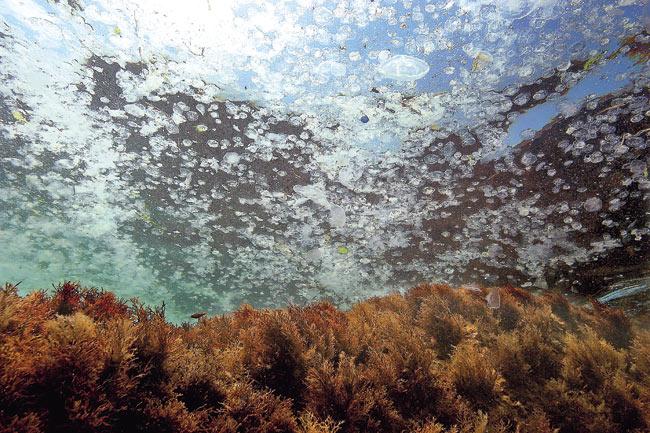UK scientists create first scientifically-coordinated global-scale database of jellyfish records

London: Jellyfish and other gelatinous zooplankton are present throughout the world’s oceans, with the greatest concentrations in the mid-latitudes of the northern hemisphere, showed the scientists who created the world’s first global jellyfish database.
ADVERTISEMENT

Jelly fish swim near the surface of the Black Sea near the city of Sinop, in northern Turkey. The Black Sea is famous for underwater currents and its cold water. Because of poisenous gas at 200 metres below sea level, there is no ecosystem under that level here. Pic/AFP
In the North Atlantic Ocean, dissolved oxygen and sea surface temperature were found to be the principal drivers of jellyfish biomass distribution. Scientists used the Jellyfish Database Initiative, or JeDI, to map jellyfish biomass in the upper 200m of the world’s oceans and explore the underlying environmental causes driving the observed patterns of distribution.
“Anyone can use JeDI to address questions about the spatial and temporal extent of jellyfish populations at local, regional and global scales, and the potential implications for ecosystem services and biogeochemical processes,” said Rob Condon of University of North Carolina Wilmington JeDI is the first scientifically-coordinated global-scale database of jellyfish records, and currently holds over 476,000 data items on jellyfish and other gelatinous taxa. The findings appeared in the journal Global Ecology and Biogeography.
 Subscribe today by clicking the link and stay updated with the latest news!" Click here!
Subscribe today by clicking the link and stay updated with the latest news!" Click here!






